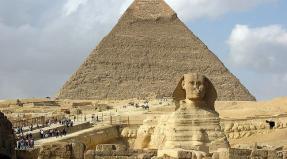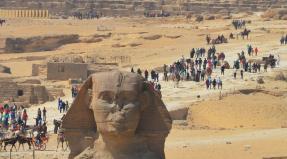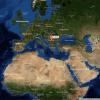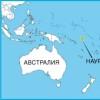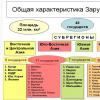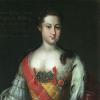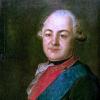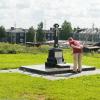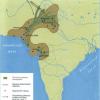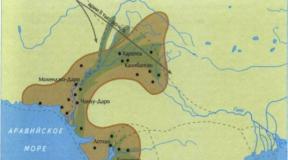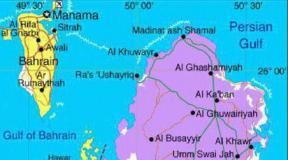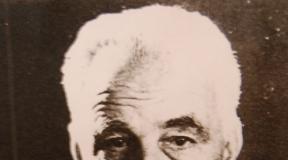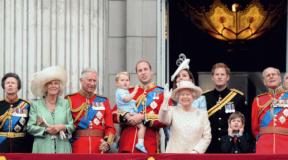Fiefdoms of the Sheremetevs. Ancient estates of the Sheremetev family. Chirkino (Stupinsky district). Photo and description
Description of the surrounding area
The Sheremetevs are an ancient and, perhaps, the most famous Russian boyar family. In the genealogical books, the Sheremetyev family is named among the "outgoing" families from the land of the Prussians. The ancestor of the Sheremetevs is considered Andrei Kobyla (Sheremet), mentioned in the annals of 1347. at the court of the Moscow prince. His son Fyodor Koshka was a boyar under Prince Dmitry Donskoy. From the descendants of Fyodor came two powerful branches of the Sheremetevs and the Romanovs.
The name of the Sheremetyevs is associated with such estates as Ostankino, Kuskovo, but the estate in the village of Chirkino is the first ancient patrimony of the Sheremetyev boyars, granted to Andrei Kobylin by Ivan III at the beginning of the 16th century for the Novgorod campaign. Glorious sons of this family (who were later the first in Russia to receive the title of count, granted by Peter I to the outstanding Russian commander, successful diplomat, the first Russian Field Marshal, Knight of the Order of the Knights of Malta Boris Petrovich Sheremetev (1652-1719)) did a lot for Russia: they participate in ALL historical events: battles, state reorganizations.
In 1514, on a high hill in the village of Chirkino, a church was built in honor of the Protection of the Mother of God. Next to him in the 17th century, the boyar Vasily Sheremetev erected in honor of his heavenly patron Saint Basil the Great a typically baroque tiered church "under the bell", which later became his tomb. Once it was surrounded by an open gallery-gulbische. At the same time, the superstructure of the Church of the Intercession of the Mother of God was made. Later, Pyotr Borisovich Sheremetev (1713-1788, chief chamberlain, art lover) added the chapel of the apostles Peter and Paul.
Unfortunately, the fate of the churches themselves, Archpriest John (who served in the Intercession Church) and novice Anna Korneeva, who helped him in the church, after the October Revolution repeated the fate of many thousands of others on the territory of the Soviet state. In accordance with the testimony of false witnesses, a certificate was issued for the arrest of priest John Pokrovsky, signed by the leaders of the NKVD of the Moscow region. On January 27, 1938, the authorities arrested Archpriest John, and on February 13, the novice Anna Korneeva, imprisoning them in the city of Kashira. The Hieromartyr John (Pokrovsky) and the Monk Martyr Anna (Korneeva) were sentenced to death by the NKVD troika on February 21, 1938. On February 26, 1938, the sentence was carried out. Sadly, but for that time it was quite an ordinary case ... Excerpts from interrogation protocols are now available on the Internet.
It was believed that the line of the boyars of the Sheremetevs faded away after the October Revolution of 1917, however, it turned out that there is a direct descendant of the Sheremetevs - Count Georgy. He lives in California, USA. Several years ago he visited his ancestral nest and, according to eyewitnesses, on that day a small icon of the Intercession of the Most Holy Theotokos from the Intercession Church was pacified ...
The mentioned miraculous case is far from the only one: the current rector of the Chirkin temples, priest Viktor Kuznetsov, can give many testimonies of contemporary miracles and cases of miracles. And the overwhelming majority of them are connected by consecrated, strong, pure water sources, located near the village of Chirkino.
“One is located in the lowlands. Directly under the towering temples of the village of Chirkino. Source "Joy of All Who Sorrow". It is famous for its extraordinary concentration of silver. Its content in the water is twenty times higher than the usual norm here! .. A high canopy with a dome and a cross rises above the spring. There is a comfortable swimming pool nearby.
Two other sources are located at the entrance to the temple complex, near the village of Shcherbinino, at the bridge over the river. Here you will see a crystal stream bursting out of a large diameter pipe. This source is consecrated in honor of the locally revered saints Hieromartyr John (Pokrovsky) and the Monk Martyr Anna (Korneeva), who were martyred for the faith in 1938.
Near the indescribable beauty is the Tsar's spring in honor of the great martyrs, passion-bearers of Tsar Nicholas 2 and Tsarevich, the youth Alexy, who were killed for the faith and the Fatherland. This dedication is not accidental, since the root of the family of the boyars Sheremetev and Romanov is one. Almshouse (now dismantled) at churches with. Chirkina was also, during construction, consecrated in 1908 in honor of the birth of Tsarevich Alexy Nikolaevich Romanov.
This source bewitches with its extraordinary beauty. A round barrel of the purest water, six meters in diameter. This is a living, wondrous, natural aquarium, created by the Creator of everything. Algae in green lace frames its bottom. About two dozen springs break out, whipping up grains of sand high. Their bubbling does not in the least excite the numerous fish, slowly waltzing in the weightlessness of the reservoir. Anyone who comes up and sees this inexplicable miracle freezes with bewitching delight. The strong beating of the springs in the sandy bottom of the spring does not frighten at all, does not excite, on the contrary, it joyfully soothes. I don't want to leave him. Anyone who wants to cheer up receives long-term energy for body and soul in it.
The fourth source is especially famous - the ancient miraculous source of the prophet of God Elijah. He is mentioned in many historical descriptions, chronicles, church historiography of the Kolomna district of the 18th century. The archives contain attested, documented records of the consistory about miraculous events that took place at the source for a long time. "
Brief historical background.
Temples and villages of Stupinskaya Land. Historical studies. *
The Church of the Intercession of the Virgin and the Church-Bell Tower of St. Basil the Great. The village of Chirkino.
* * *
The village of Chirkino on the Reuta River is the oldest possession of the Sheremetyev boyar family. These lands were awarded by the Grand Duke John III to Andrei Sheremet for the Novgorod campaign. The Church of the Intercession of the Virgin, erected in 1514, was three-altar. The limit in the name of St. Nicholas of Mirliki was crowned with a separate chapter. By the diligence of the owner of the village, Vasily Borisovich Sheremetyev, at the end of the 17th century, the quadrangle of the temple and the entire octagon were built on a third of the height. Ober-chamberlain Pyotr Borisovich Sheremetyev, by the way, is a great admirer of painting and fine arts in general, in the early 1780s he added a chapel in the name of the Apostles Peter and Paul to the Church of the Intercession of the Virgin. An unsurpassed lover of music and theatrical art, by the way, who himself participated in theatrical performances, as well as played the cello well, often played music in the orchestra of his serfs, Nikolai Petrovich Sheremetyev at the beginning of the 19th century updated the chapel of Nikolai Mirlikiy
The church-bell tower in the name of St. Basil the Great was built at the end of the 17th century by the owner of the village V.B. Sheremetyev as a family burial vault.
In the troubled times of communist lawlessness, the Temples were closed, plundered and partially destroyed.
The rector of Khramov, Father Ioann Pokrovsky and novice Anna Korneeva, were shot by the NKVD troika on February 26, 1938 at the training ground in Butovo.
In 2000, Father John and novice Anna were glorified among the New Martyrs of Russia.
About the sources.
The name of the Sheremetyevs is associated with such estates as Ostankino and Kuskovo, but the estate in the village of Chirkino is the first ancient patrimony of the Sheremetyev boyars. There are four holy springs in these places.
One is located in the lowlands, under the towering temples of the village of Chirkino, the source of "Joy to All Who Sorrow". It is famous for its extraordinary concentration of silver. Twenty times its content exceeds the norm!
The other two are located at the entrance to the temple complex near the village of Shcherbinino. A stream comes out of a large diameter pipe. This source was consecrated in honor of the locally revered saints St. John (Pokrovsky) and St. Anna (Korneeva), who were martyred for the faith in 1938.
The third source is of indescribable beauty, a round barrel of the purest water, 6 m in diameter. This is a living, wondrous, natural aquarium created by the Creator. Algae in green lace frame its bottom, from which 20 springs break out, whipping up grains of sand, among which little fish frolic! The immersion is incredible pleasure !!! The water temperature, as in all springs, is +4, but you don't want to go out ... Everyone gets energy for body and soul! The spring is consecrated in honor of the great martyrs, passion-bearers of Tsar Nicholas II and Tsarevich Alexei, who were killed for their faith and the Fatherland.
The fourth source is especially famous - the ancient miraculous source of the prophet of God Elijah. He is mentioned in many historical descriptions and chronicles of the church historiography of the Kolomna district of the 18th century.
And according to tradition, all our travels end with a meal. Pure in body and (I think) in soul, well-fed, we set off on the way back home.
The Sheremetevs are an ancient and, perhaps, the most famous family of Russian boyars.
Such famous estates as Ostankino and Kuskovo are associated with the Sheremetyevs, but the land where we went is the first and oldest patrimony of the Sheremetyevs, granted to them at the beginning of the 16th century. We saw a temple complex built at the behest of the boyars, one of the churches of which is more than five hundred years old! But most importantly, they visited the so-called Four Springs, where pilgrims have been coming in both winter and summer for the past few years to swim and collect holy water. Few people know that only one of the four sources is truly ancient! We conducted a small independent investigation and determined in which source the Sheremetyevs took water, and which ones became popular recently.
The gathering of the column was scheduled for 10 am on the 100th kilometer of the Don highway.
Today we were accompanied by Dmitry and Elena on a tilt UAZ, Oleg and his family on the Patriot, Andrey with his wife and grandson on the Patriot, Andrey on Daster, Alexey with his comrades on the Niva and Andrey Evgenievich with his sons on the Niva.

Briefing before the start.




Some questions were aroused by the movement of the column through the city of Stupino, which had to be passed through, the situation was complicated by the blocking of the main street due to the construction of an overpass. But we slipped through the narrow streets with a bunch of traffic lights surprisingly fast.

stupino


Almost immediately we force the first ford.


A steep descent followed by another one.
All cars coped with these obstacles without problems, only for Duster they had to break the ice a little - they were afraid for plastic bumpers.
The first attraction is the Church of the Nativity of the Blessed Virgin Mary in the village of Staroe.

Church of the Nativity of the Blessed Virgin Mary, 1896 and 1902

Dmitry tells the history of these places.
The village of Staroye has been known since the 17th century. From the frequent raids of the Tatars and devastation in the Time of Troubles, by 1620 it turned into a wasteland. In 1775, a wooden church of the Nativity of the Mother of God was built in the village. The currently existing stone church of the Nativity of the Mother of God was built at the expense of the Izmailov merchant family in 1893. During the Soviet era, the temple was closed. No restoration work is currently underway.

Near the temple are the ruins of a church house.

Once here, on a gentle slope leading to the ponds on the Bunchikha River, the Kurtino estate was located. Its owner was Count Pavel Martynovich Skavronsky (1757 - 1793) - the grand-nephew of Catherine I, a well-known rich man and music lover in his time, chamberlain, Russian envoy to the Neapolitan court. Unfortunately, from the buildings of the estate, only the stone church of the Icon of the Mother of God Joy of All Who Sorrow, consecrated in 1794, has survived. In the 1930s, the temple was closed, now it is abandoned.

Church of the Icon of the Mother of God of All Who Sorrow Joy, 1794.








Another village where there was an estate that has not survived to this day is Sukovo. This modest middle-class estate was founded in the first half of the 18th century, in the middle of the 19th century it belonged to Princess E.A. Yaroslavova. The compositional center was the manor house, now dismantled to the foundation, the front yard was limited by outbuildings and services. As in Curtino, only the church of the mid-18th century has survived from the manor buildings.

Church of the Kazan Icon of the Mother of God in Sukovo. Built between 1745 and 1820


Dmitry tells the story of the last abbot of the Kazan temple: he was Abbot Methodius (in the world Nikolai Mikhailovich Ivanov, born 1899), who was arrested in 1929, but after 3 years he returned from exile. On August 30, 1937, Yezhov's operational order No. 00447 was issued, where the "churchmen" were classified as "anti-Soviet elements" in second place after the kulaks, but before members of the hostile political parties. All over the country, mass executions of clergy began at predetermined limits. The accusation was brought against the standard - "counter-revolutionary agitation". Hegumen Methodius was accused of "organizing illegal gatherings of anti-Soviet monastic elements who had returned from exile, conducted extensive correspondence with exile, provided material assistance to the exiles, and until recently carried out secret tonsure into monasticism." On November 8, 1937, he was sentenced to death. After that, the temple was closed and destroyed.




With the help of an ax and such and such a mother, the problem was solved, and the column moved on.

The ruins of another estate - Aleshkovo - appeared across the river.

Ensemble in the classicism style of the 1800s. placed on top of a gentle hill. The buildings are stretched along the slope and form a panorama designed to be viewed from the access road.
In the scribal books of the 16th century it is recorded that the village of Alyoshkovo belonged to Ivan Andreevich Zhitov, and in 1577 the village passed into the possession of the hawk of the royal court M.V. Grigorov. The estate was formed at the beginning of the 19th century, when it belonged to P.A. Novikova. In the middle of the XIX century. passed to the family of Major General P.A. Kozhin. From the Kozhins, the estate was acquired by natives of serfs, who bought the free - the Shcherbakovs. At that time, they owned a factory in the city of Ozyory. F. Shcherbakov opened a potato-making establishment in Aleshkovo, a beater and 14 horse-driven tokmaks for finishing the calico, which was brought from his factory, with a stream of water. The potato-making establishment produced raw starch for finishing fabrics. By the beginning of the 20th century, more than five hundred people lived in the estate.
Now only a dozen permanent residents live in Aleshkovo, summer residents also come here in the summer. From the estate remained the ruins of the main house, services, horse yard, the old linden park is noticeable, among the general picturesque devastation, the newly restored Church of the Assumption of the Blessed Virgin Mary stands out.

Church of the Assumption of the Blessed Virgin Mary, 1819.

The main manor house.

Water tower.



As it turned out, it was not in vain that we refreshed ourselves, because it was not easy to leave Aleshkovo in the direction we needed.
7 days ago, there were no problems with this at the ride - there was a normal rolled road, there was no snow all week, the last couple of days was generally a plus. However, when leaving the field, there was simply no road - one big continuous crossing. Our UAZ car briskly rushed forward and sat down almost immediately.


UAZ began to pull the Niva and sat down by itself.
We decided to drag Niva with the Patriot, but the cable between her and Hunter turned out to be stretched out, and the shackle's finger bitten. While the Niva was pushed and swayed in every possible way to unhook, Gelik cut the road and pulled it to the side.


Apparently from happiness, the driver of the Niva Vlad decided to get lost and for some reason began to turn around in a snowy mess.
Meanwhile, Gelik pulled out Hunter too.


On the already beaten road, the rest of the participants of the trip passed without any problems.



The field was beautiful in the rays of the setting sun!



A short haul along the highway and we again go to the field road.





Gelik and Patriot passed it without any problems, and Duster again got scared for the plastic parts.




The rest of the ford can be said to have flown by.






We are approaching the "Four springs" - this is the name of the miraculous springs located in the area of \u200b\u200bthe village of Chirkovo. For the past decade, pilgrims have come to these places both in winter and in summer to swim and collect holy water. It remains to determine by indirect signs which of them is old, Sheremetyevsky.
Before us is the source of the locally revered saints Hieromartyr John (Pokrovsky) and the Monk Martyr Anna (Korneeva), who were tortured for their faith in 1938.

Source of Saints John and Anna
It is crowded around - locals come here with baklashki for water. We also try the water, inspect everything around, different versions sound and Oleg makes the correct verdict - the source is a large-diameter pipe, from where a stream of water breaks out - this is part of an old water supply system that led to the farmyard, and the ruins nearby are an old boiler room. A well with a pump, which is not working now, can be found five meters above the pipe.


Nearby is another source - Tsarsky - in honor of the great martyrs, passion-bearers of Tsar Nicholas 2 and Tsarevich, the youth Alexy, who were killed for their faith and the Fatherland. This dedication is not accidental, since the root of the family of the boyars Sheremetev and Romanov is one. The source is a small turquoise lake with bubbling springs and fish swimming in clear water.

Tsar's source.

In fact, the Tsarsky spring looks very cool. And fish swim in it even in February! Don't believe me? Watch the underwater video filmed by Andrey:
Andrei, however, voiced the correct version of the origin of the source: if you look closely at the banks around, it becomes clear that they were expanded, the inhabitants of the village of Shcherbinino did it to wash clothes in the 50s of the 20th century.
The third source is located in the village of Chirkovo - "Joy of All Who Sorrow".

The source of Joy of All Who Sorrow.

In the background, it can be seen that the source is located in the lowlands next to the temples, and the tablet says that the level of silver in it is 20 times higher than the norm.
Everything indicates that the source is definitely Sheremetyevsky. But here, too, bad luck - Andrey gives the correct version - the source is too similar to a well. This is really the only source of drinking water for the residents of Chirkin. People dug it themselves and laid the rings, but after the restoration of the church, this ordinary village well was consecrated, so that the pilgrims would have where to get holy water.
Let us dwell on the ensemble of churches in more detail.

The temple complex of the Church of the Intercession of the Most Holy Theotokos and Basil the Great in the village. Chirkino.

The village of Chirkino is the oldest, the first patrimony of the Sheremetevs, granted by Ivan III to Andrei Kobyla (Sheremet) for the Novgorod campaign. The father of the first Sheremetyevs, Andrei Sheremet, died and left Chirkino to his younger son Vasily Andreevich. Vasily Andreevich Sheremetev was the builder of the first stone Church of the Intercession in Chirkin.

Vasily Andreevich had six sons: Ivan Bolshoi, Grigory, Semyon, Nikita, Ivan Menshoi and Fyodor Vasilievich. After the death of Vasily Andreevich, all his numerous estates, except Chirkin, passed to his sons, who owned them together until 1564 (in this year they split). A special record was made on Chirkino: with this village Vasily Andreevich blessed the youngest of his six sons - Fyodor. What prompted such an order, why was the old patrimonial patrimony again transferred to the youngest, and not the eldest of the sons?
The fact is that Chirkino was not considered by the Sheremetevs as an ordinary land ownership. It housed a parental churchyard with the family church of the Intercession, where members of the family were buried for a long time, from the 15th or even from the 14th century. The Sheremetevs themselves until the 17th century. they did not live in Chirkin: they "sat" in the villages and villages in the Chirkin district - in Fedorovsky, Gorodnya, Meshcherin, Prussi, etc. Honoring the memory of ancestors, "parents", as they said at the time, was considered by the ancients to be the primary virtue. Here great church holidays were celebrated together, baptized and buried.
It was assumed that in order to save the souls of ancestors, funeral services should last forever, until the Last Judgment. In this case, one of the members of the family had to take care that the funeral services were regularly performed today and did not stop in the future. It was believed that for this role the youngest son is most suitable, who will live longer than others and longer, thus, will be able to take care of the parental cemetery and the family church. Indeed, Fyodor Vasilyevich died only in 1592, having outlived all his brothers.
By the end of the reign of Ivan the Terrible, an important event took place in the Sheremetev family: they gave their only niece Elena Ivanovna (daughter of Ivan Vasilyevich Menshoy from neighboring Chirkina Gorodnya) to the eldest son of Ivan the Terrible - Tsarevich Ivan Ivanovich. In the event of the death of Tsar Ivan, the title of the Russian Tsarina awaited her, and the Sheremetevs were to become the first people in the state.
However, these dreams were not destined to come true. Elena Ivanovna herself was an indirect cause of the catastrophe that befell her: during the stay of the royal family in the Alexandrovskaya Sloboda in 1581, the tsar found her, already pregnant, in the hotly heated palace rooms in one shirt, which, according to the concepts of that time, was the height of indecency (on a woman , the more noble, there should have been at least three shirts). The king, who was furious, beat his daughter-in-law. Ivan Ivanovich ran up to his wife's cry and stood up for her. The king attacked his son and beat him half to death. Shaken, Ivan Ivanovich fell ill and died 11 days later. Elena Ivanovna had a miscarriage. According to the custom of that time, the young widow was tonsured into a monastery.
If it were not for the tragedy in the Aleksandrovskaya Sloboda, the Sheremetevs would probably have occupied the same position in the state that the Godunovs subsequently occupied through Irina Godunova, the wife of Tsarevich Fyodor Ivanovich.
Trouble came to Fyodor Vasilyevich: he remained childless. For the aging owner Chirkin, the question arose about the heir and he wrote a will, according to which he transferred his patrimonial fiefdom with the village of Chirkin to Kirillo-Belozers monastery as a contribution to his soul and to the souls of his parents. But Fyodor Vasilyevich had nephews who strongly disagreed with such a will. An unprecedented litigation began, which lasted several decades (until the middle of the 17th century).
As a result, the patrimony finally remained with Pyotr Nikitich Sheremetev, then passed to his youngest son, then to his grandson. Now the Sheremetevs already lived in Chirkin, their estate was located to the northwest of the temples.
Vasily Borisovich Sheremetev entered Russian history as the famous "Crimean prisoner". In 1660 he was taken prisoner by the Crimean Khan and imprisoned in the Chufut-Kale fortress. There he sat for 20 years, after making a huge ransom for him, he was released by a sick old man and died 4 months later in Moscow, without having visited his Chirkin.
Vasily Borisovich had a son who died in infancy, and a daughter who married Prince Golitsyn, so the question of an heir arose before him: he now had no male descendants bearing the surname Sheremetev. Vasily Borisovich acted unexpectedly: despite the presence of direct heirs in the person of his daughter and her husband, he made a will in favor of his nephew, the most brilliant representative of the Sheremetev family in history, the future field marshal, the famous associate of Peter the Great, praised by Pushkin in "Poltava" under the name "Sheremetev noble".
Touched by the generous act of his uncle, Boris Petrovich decided to honor his memory in a special way - to build over his coffin (Vasily Borisovich bequeathed to bury himself in Chirkin) a burial church, and at the same time to reconstruct the Intercession Church.
So in 1676 in Chirkino a tiered pillar-like temple "under the ringing" appeared, the original version of the patrimonial church-bell tower of the heyday of the Moscow Baroque - Basil the Great.

Church of Basil the Great, 1676 - Church-tomb of Vasily Borisovich Sheremetyev.
In the Chirkinsky churches, magnificent baroque iconostases covered with openwork carvings were erected, which gained fame as outstanding works of Russian applied church art back in the middle of the 19th century. The iconostases disappeared (possibly died) just like all the Chirkin icons, among which there were very ancient ones, in the 50s of the 20th century.
A few more hilly field roads and we drive up to the final point of our journey - the source of Elijah the Prophet. There is nothing to guess, so it is clear that since the previous three were consecrated in the 20th century, the remaining one is ancient, Sheremetyevo.

The ancient miraculous source of the Prophet of God Elijah is six meters in diameter, at the bottom there are about two dozen springs. It appeared from a lightning strike on the holiday of the same name in time immemorial. He is mentioned in many historical descriptions, chronicles, church historiography of the Kolomna district of the 18th century. The archives contain attested, documented records of the consistory about miraculous events taking place at the source for a long time.

Thank you all for the company!
Video from Alexey:
It’s not fair. I have been visiting these wonderful four miraculous springs for 7 years already. And I never wrote about them.
A conversation about them should take more than one page, that's for sure. First, their wonderful power. Secondly, the miraculous power. Third, a rich and glorious history.
Two springs are located under the road bridge, a little before reaching Shcherbinino (one of them, which is enclosed in a pipe, is consecrated in honor of the Hieromartyr John and the Monk Martyr Anna Korneeva (for more details see), the second, in the form of a natural font, is a royal spring, consecrated in honor of the martyred royal family), the third - in the village of Chirkino, next to ancient temples (called "Joy of All Who Sorrow"), the fourth is the miraculous source of Elijah the Prophet, located in the forest, not far from the village of Orekhovo. On Ilyin's day (August 2) there is a procession of the cross to Ilyin's source.
Temples of the Intercession of the Mother of God and St. Basil the Great in Chirkino:
It is not so easy to get to Ilyin source. It is located in the forest, across a large field. If you go by car, then you are faced with certain difficulties: the road is unpaved, broken. No wonder there is a legend that a drunk or angry person will never find the miraculous source of the prophet Elijah.
This source is truly unique. It is ancient, the first evidence of healing miracles taking place dates back to the 18th century. The story of a peasant Vasily Osipov from the neighboring village of Shcherbinina, who from birth could not walk, is instructive. Once in a dream the prophet Elijah appeared to him, who asked him to come to his source.
... The patient covered a distance of 2 versts of his way for more than a day, crawling through ditches, holes, hills. Once here, in this forest thicket, under the dome of trees, Vasily performed ablution with prayer. He returned home on his own feet.
Healing miracles continue to this day. People with faith go to the source. And what a nature!
A cozy font is equipped here, and parishioners bring their icons. You just wonder how many of them have been left here by grateful people.
The next source lies near the churches of the Intercession of the Mother of God (1514) and St. Basil the Great (XVII century) in Chirkino. These are not just temples and not just villages. We can say that the family of the Sheremetev boyars came from here. This was their first possession.
Unusually picturesque surroundings of the source "Joy of All Who Sorrow" in the village. Chirkino. Such a landscape cannot but kill sorrow, sorrow, despondency and instill true joy and happiness for the fact that the Lord created such beauty for us:
The Chirkinsky spring is famous for its extraordinary concentration of silver. And it tastes and feels.
Two other sources, as already mentioned, are consecrated in honor of the Holy Martyr John and the Monk Martyr Anna Korneeva - locally revered saints - and the royal family.
The royal spring simply amazes with its natural beauty. This is SOMETHING! The most transparent water, many small springs resembling small volcanoes made of sand, fish serenely floating in the water column, willow branches gracefully bowing their branches ... Look for yourself:
Each time, returning from the sources, you think: who am I after what I saw, heard, felt? Small fry. All that remains is to be surprised, touched, Love, Believe, Hope and indulge in Divine Beauty.
